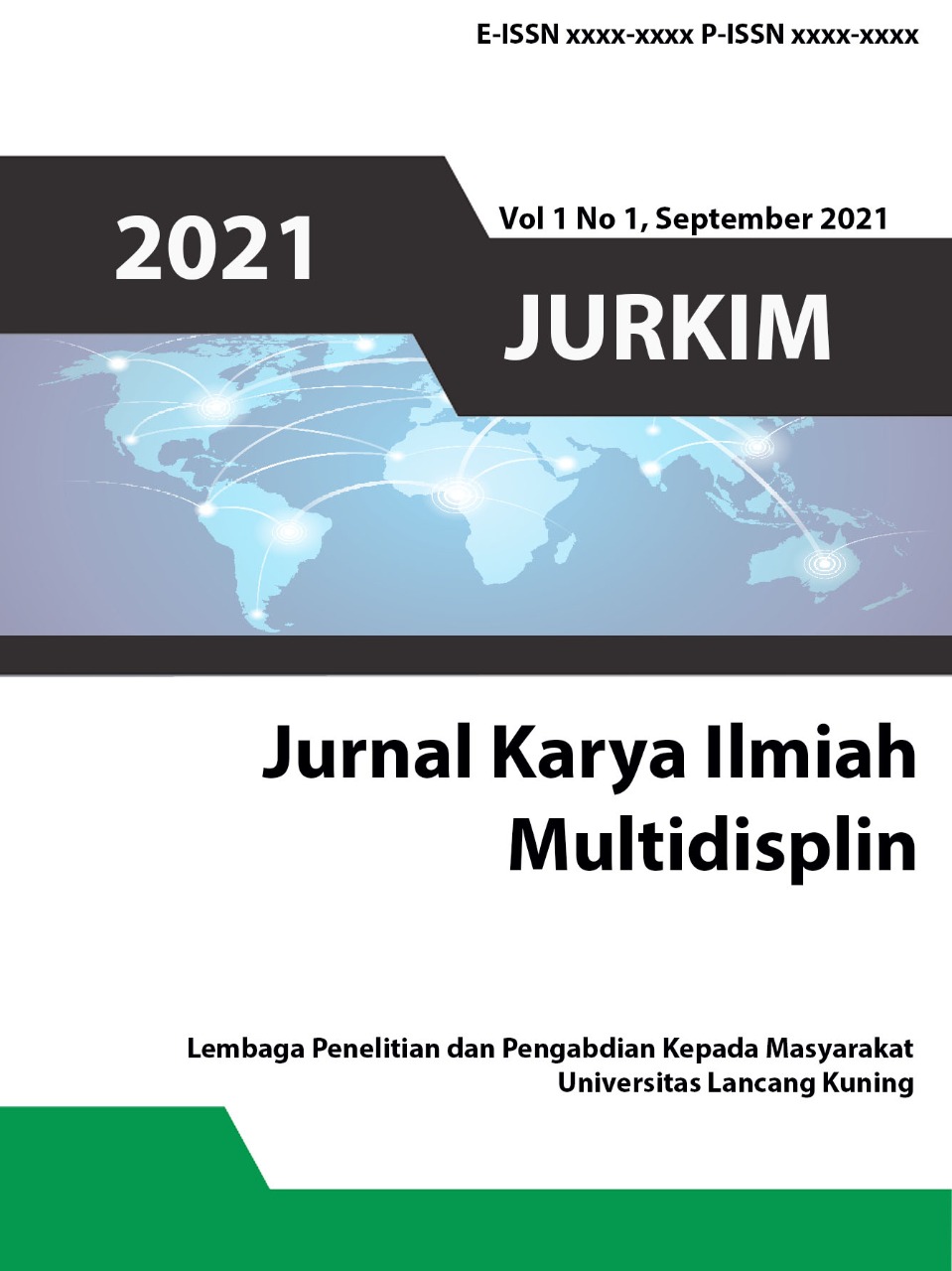Studi Karakteristik Luar Dan Efisiensi Generator Dc Penguat Terpisah Terhadap Perubahan Beban Dengan Menggunakan Metode Fuzzy Logic
DOI:
https://doi.org/10.31849/jurkim.v1i1.7888Abstract
A DC generator is a dynamic electrical system that converts mechanical energy into electrical energy. A free and separate excitation type DC generator is a generator whose field winding can be connected to a DC source. The power source is independent of the engine. The DC voltage field coils mounted on the form of resistance Rf will generate currents If and cause flux on both poles. The induced voltage will be generated in the generator. The load characteristics of a DC generator show the relationship between the terminal voltage Vt and the field current If when the generator is loaded. When the generator is loaded, a load current will flow IL. In this study, the calculation method used is fuzzy logic, Mamdani. The results obtained when loaded with a field current of 1.2 Amp measured a clamping voltage of 123.5 Volt with a load of 100 watts. When 1.1 Amp lowered the current, the clamping voltage decreased to 120.6 Volt with a load of 100 watts. In comparison, the results of fuzzy logic in 1.2 Amp field current-induced voltage is 128 Volts with a load of 100 watts, so the average percentage difference is 6.74%. To calculate efficiency at a field current of 1.2 Amp load of 100 watts, the resulting efficiency is 44.22%, the greater the load, the smaller the efficiency value. While the efficiency results generated using fuzzy logic are 43.9% with a field current of 1.2 Amp and a load of 100 watts, the average value of the difference is 1.17%.
References
(2000). Zuhal, Dasar Teknik Tenaga Listrik dan Elektronika Daya. Jakarta: Gramedia Pustaka Utama. Jakarta: Gramedia Pustaka Utama, 1977.
Chapman, Electric Machinery Fundamentals. America: McGraw-Hill, 2005.
H. Berahim, “Teknik Tenaga Listrik. Yogyakarta: Andi Offset.,” Angew. Chemie Int. Ed. 6(11), 951–952., 1967.
D. Muliadi, “Universitas Sumatera Utara 7,” pp. 7–37, 2015.
A. EL Sebaay, M. Ramadan, and M. A. A. Adma, “Studying the Effect of Non-Linear Loads Harmonics on Electric Generator Power Rating Selection,” Eur. Sci. Journal, ESJ, vol. 13, no. 18, p. 548, 2017.
H. D. Laksono and H. Effendi, “Aplikasi logika fuzzy pada perkiraan kebutuhan energi listrik jangka panjang di provinsi sumatra barat sampai tahun 2018,” Teknol. Inf. Pendidik., vol. 3, no. 1, pp. 42–53, 2011.
H. Kusumadewi, S dan Purnomo, Aplikasi Logika Fuzzy untuk Pendukung Keputusan. Yogyakarta: Graha Ilmu, 2004.
H. Kusumadewi, S dan Purnomo, Aplikasi Logika Fuzzy untuk Pendukung Keputusan Edisi Kedua, Kedua. Yogyakarta: Graha Ilmu, 2013.
M. Z. A. Zainun, N. Y dan Majid, “Low Cost House Demand Predictor,” Universitas Teknologi Malaysia, 2003.








